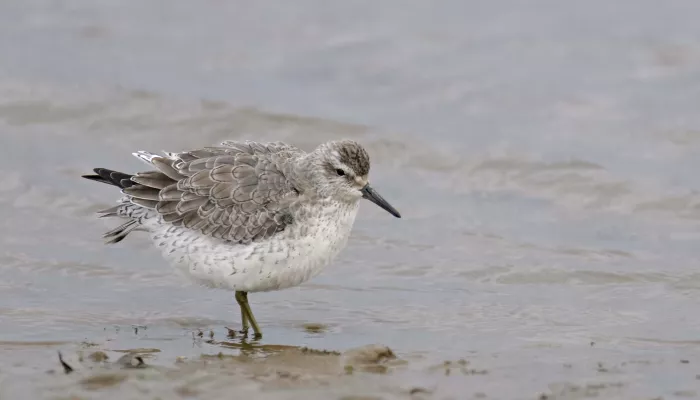| Statistics | |
|---|---|
| Length: | 23cm - 25cm |
| Wingspan: | 59cm |
| Weight: | 140g |
| Average Lifespan: | 7 years |
A stocky, little sandpiper, the knot can be spotted in estuaries from August onwards, migrating here from the Arctic where it breeds. Look out for it probing the muddy sand with its specialised bill as it hunts for marine animals to eat.
About
The knot is a medium-sized, short, stocky sandpiper that migrates to the UK in large numbers during winter from its Arctic breeding grounds. Commonly spotted feeding in estuaries around the coast, the largest numbers can be seen at high tide roosts in the depths of winter. A long-distance migrant, the knot can travel up to 15,000 km, stopping along the way at least once to feed. Knots eat invertebrates, molluscs and crustaceans which they find by probing their bills in the mud and sand; special sensory organs in their bill tips help them to detect buried prey in a similar fashion to the way echolocation works in bats.
How to identify
The knot is fairly large and chunky, with short, green legs. In winter, they are silvery-grey on top and white underneath. In summer, they are brick-red underneath, with speckled, rust-brown upperparts. The bill is long, black and straight.
Did you know?
The Latin name of the knot, Calidris canutus, recalls King Canute, the 10th century Viking King of Norway, Denmark and England, who is famed to have set his throne on the beach and commanded the tide not to come in. The tide did come in, of course, and Canute was reported as saying 'Let all men know how empty and worthless is the power of kings, for there is none worthy of the name, but He whom heaven, earth, and sea obey by eternal laws.' He then hung his crown on a crucifix and never wore it again. There are varying reports as to whether this actually happened and, if it did, whether Canute was hoping to really move the tide or whether he was showing his courtiers that he was not as powerful as they supposed.

